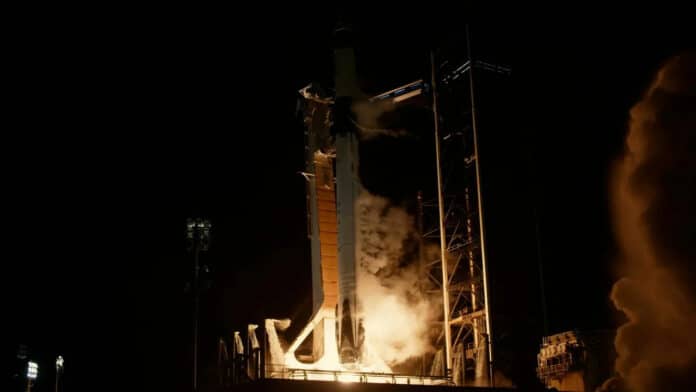SpaceX and NASA have successfully launched the Crew-8 mission to the International Space Station. The launch took place at 10:53 p.m. EST Sunday from Launch Complex 39A at NASA’s Kennedy Space Center in Florida.
The SpaceX Crew-8 mission is the agency’s eighth commercial crew rotation mission with the company to the space station. A SpaceX Falcon 9 rocket propelled the Dragon spacecraft into orbit carrying a crew of four NASA astronauts, including Matthew Dominick, Michael Barratt, and Jeanette Epps, along with Roscosmos cosmonaut Alexander Grebenkin, for a science expedition aboard the orbital laboratory.
“On this eighth crew rotation mission, we are once again showing the strength of our commercial partnerships and American ingenuity that will propel us further in the cosmos,” said NASA Administrator Bill Nelson. “Aboard the station, the crew will conduct more than 200 science experiments and technology demonstrations to help fuel this new era of space exploration and benefit humanity here on Earth.”
During its flight, SpaceX’s Dragon spacecraft, Endeavour, will be monitored by teams at the mission control center in Hawthorne, California. NASA’s Mission Control Center in Houston will also keep a close eye on space station operations throughout the flight.
Crew-8 is going to join the space station’s Expedition 70 crew, which already has NASA astronauts Jasmin Moghbeli and Loral O’Hara, ESA astronaut Andreas Mogensen, JAXA astronaut Satoshi Furukawa, and Roscosmos cosmonauts Konstantin Borisov, Oleg Kononenko, and Nikolai Chubb.
With the addition of Crew-8, the number of crew aboard the space station will increase to 11 for a short time until some of the members from Crew-7 return to Earth a few days later.
Crew-8 will be conducting new scientific research to prepare for human exploration beyond low Earth orbit and benefit humanity on Earth. Experiments include the study of brain organoids to understand neurodegenerative disorders and the effects of UV radiation and microgravity on plant growth. During their six-month stay aboard the ISS, the Crew-8 astronauts will conduct more than 200 scientific experiments and technology demonstrations in microgravity.
Their research will benefit humanity on Earth and help develop the skills needed to operate future commercial destinations in low Earth orbit and explore farther from Earth. NASA’s Artemis missions will be able to pave the way for future long-duration trips to the Moon and beyond, thanks to the research conducted on the space station.
